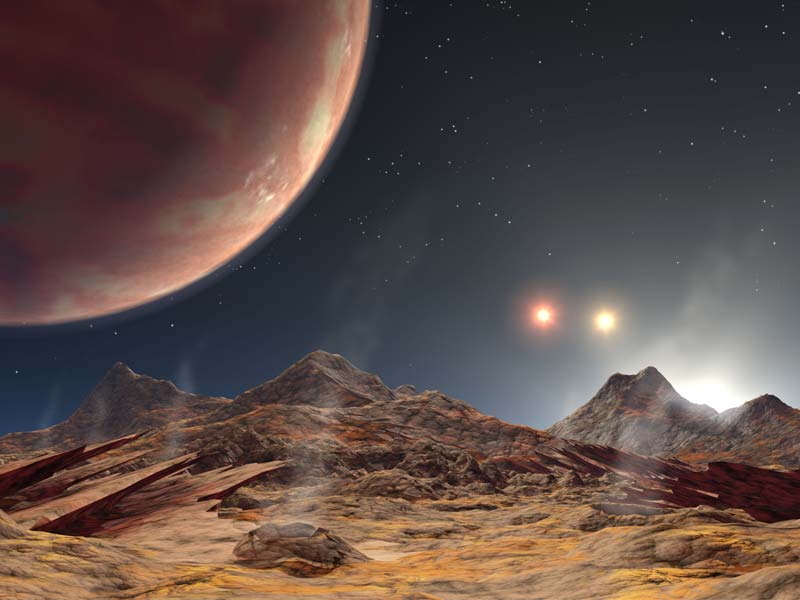Having Multiple Suns Doesn't Doom a Planet to an Early Death

Luke Skywalker's backstory may not be so fanciful after all.
Some alien planets in multiple-star systems — such as the two-sun Tatooine, Luke's home world in the "Star Wars" universe — may indeed nestle in orbits that are stable for long stretches of time, a new study suggests.
In the study, researchers ran more than 45,000 computer simulations, examining where planets of various masses and dimensions could exist in two- and three-star systems. Planets have been discovered in such systems, but just how long they can remain in their orbits before gravitational interactions send them crashing into one of their host stars, or careening out into interstellar space, remains a topic of considerable debate. [The Strangest Alien Planets (Gallery)]
Now, the stable-orbits proponents have some more evidence to cite.
"We ran the simulations for periods ranging from 1 million to 10 million years, in order to see if the systems are stable over very long periods," study lead author Franco Busetti, of the School of Computer Science and Applied Mathematics at the University of the Witwatersrand in South Africa, said in a statement.
"The analysis shows that most configurations had large enough stable regions for planets to exist," added Busetti, who presented the results Monday (June 4) at the 232nd meeting of the American Astronomical Society in Denver. "Many of these areas are actually very habitable for planets."
Fewer than 40 three-star planets are known. But the new study, which has been submitted to the journal Astronomy & Astrophysics, could help astronomers find more, Busetti said.
Breaking space news, the latest updates on rocket launches, skywatching events and more!
"It could assist in selecting suitable candidates for a survey of such systems and guide the observational searches for them," he said. "The geometry of the stable zone indicates not only where to look for planets but how to look."
For example, NASA's Transiting Exoplanet Survey Satellite, which launched in mid-April to hunt for worlds circling stars in the sun's neighborhood, is expected to exceed Kepler's tally eventually. And Europe's star-mapping Gaia spacecraft will likely spot thousands of exoplanets as well, European Space Agency officials have said.
Follow Mike Wall on Twitter @michaeldwall and Google+. Follow us @Spacedotcom, Facebook or Google+. Originally published on Space.com.

Michael Wall is a Senior Space Writer with Space.com and joined the team in 2010. He primarily covers exoplanets, spaceflight and military space, but has been known to dabble in the space art beat. His book about the search for alien life, "Out There," was published on Nov. 13, 2018. Before becoming a science writer, Michael worked as a herpetologist and wildlife biologist. He has a Ph.D. in evolutionary biology from the University of Sydney, Australia, a bachelor's degree from the University of Arizona, and a graduate certificate in science writing from the University of California, Santa Cruz. To find out what his latest project is, you can follow Michael on Twitter.

